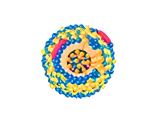Intermediate-density lipoproteins (IDL) are formed from the degradation of very low-density lipoproteins (VLDL) as well as high-density lipoproteins (HDL). Each native IDL particle consists of protein that encircles various lipids, enabling these lipids to travel in the aqueous blood environment as part of the fat transport system within the body. IDL particles are generally 25 to 35 nm in diameter and contain primarily a range of triglycerides and cholesterol esters.
Formation and Metabolism of IDL
VLDL is secreted by the liver and transports triglycerides to adipose tissue and muscle. As the triglycerides in VLDL are removed by lipoprotein lipase in capillaries, VLDL returns to the circulation as a smaller particle known as IDL. IDL particles have lost most of their triglyceride but retain cholesteryl esters. Some IDL particles are rapidly taken up by the liver, while others remain in circulation and undergo further triglyceride hydrolysis by hepatic lipase, converting them to low-density lipoprotein (LDL).


